Having access to quality information about raising livestock, poultry, and horses is important, regardless of how long you’ve been farming. Get all the information you need to raise livestock on your small hobby farm!
Having access to quality information about raising livestock, poultry, and horses is really important, whether you are just starting out with your small farm or homestead or you have been doing it for years.
I have rounded up some great resources as well as some of the experts themselves. We’ll hit on beef cattle, diary cattle, sheep and goats {dairy and meat}, pigs, horses, and of course chickens. Getting animals is often something that can be the most fun but also the most challenging for a small farmer or homesteader. I hope this article gives you the right place to start and some good things to think about. Since this is a longer post, I have included a table of contents that will scroll to each section automatically when you click the heading you’re interested in!
Chickens
- These three articles {one, two, three} are extension articles. They are very comprehensive and cover everything from breeds to housing to diseases. I highly recommend reading through these so you have a basic understanding of all things chicken.
- This article is from Farm Marketing Solutions. His chicken tractor plans are great as well as his YouTube channel.
Here’s what the experts say:
Lara from My Other More Exciting Self: Raising chickens can be fun, educational, and (of course) provide plentiful food. If you are new to this experience, you can easily be overwhelmed by the sheer number of tips and advice you might receive or find on blogs and websites. (Google “tips for raising backyard chickens” and you immediately get nearly 300,000 hits!)
When it’s said and done, however, there are a few key pointers to remember:
- Be proactive about bird health. This is critical – bird health is everything. Whether you have 2 birds, 20 birds, or 2000 birds, it’s important to get to know your birds and their behaviors. That way, you can tell when something is not right and can call in a veterinarian as needed to help provide the right care. Healthy birds will be active and alert with bright eyes. They will be moving around — pecking, scratching, and dusting — unless it’s hot and they just want shade. When a chicken isn’t acting normal, for instance if she doesn’t run to the food as usual or she wheezes or sneezes, then it’s time to start investigating.
- Keep your birds safe from predators. We know humans love chicken, but so do a lot of other animals so be aware of the kind of predators you may have in your area. This will help guide you to provide the right housing for your birds. While having completely free range birds sounds a bit romantic and idyllic on the farm, it may be better to have a more enclosed area around the pen/coop so that the birds can wander but are still safe. This type of shelter will also lessen the chances that your birds will catch germs or a virus – like avian influenza – that will make them sick or cause an early death. (Tip: chicken wire only keeps chickens in; it usually does not keep predators out – you will need something stronger.)
- Be willing to learn and read – a lot. The folks I know who raise chickens started with a variety of breeds and found the ones they ultimately liked best. Read up on feed and nutrition. Understand what chickens need in terms of temperature, lighting, and bedding. Plan ahead for what you’re going to do with all those eggs – and for what happens when those hens stop laying.
There are some amazing resources for raising small flocks, too!
- Women in Agriculture – This open Facebook group of over 12,000 women is an excellent place to network and ask questions. Many of these folks have small flocks of hens, broiler chickens, or turkeys and are happy to share their best practices for bird care.
- BackyardChickens.com – This website has tons of articles, web links, and other resources – including a bulletin board with nearly 1,400 active flock owners asking and answering questions.
- University of Minnesota Extension – The U of MN has some terrific resources for small flock owners.
- A blogger friend of mine from The Pork Diaries has a great post on raising meat (also called “broiler”) chickens here.
- I often write about poultry on my blog, My Other More Exciting Self. Please feel free to stop by anytime!
Lara is a farm girl from Minnesota – her parents, brother, and nephew run the family’s corn and soybean farm. She works off the farm full-time and has dedicated 20+ years of her career to poultry farmers as the communications director for the Minnesota Turkey Growers Association and Chicken and Egg Association of Minnesota. On her own blog – MyOtherMoreExcitingSelf.com – Lara often covers poultry/agriculture topics while also writing about gardening, family life, recipes, and the family’s pug dog, Earl. Lara is a regular contributor to Agriculture.com via its Women in Ag blog series as well as AskTheFarmers.com, and she also is an occasional moderator for the #AgChat Twitter chat, held every Tuesday evening.
Cami from NadaDrop Ranch
- Raise your chickens from chicks and handle them as much as you can, as often as you can. Our first little flock of hens was handled multiple times a day, and, as a result, were easy to handle and move as adult hens. Our next flock was a bit larger and I was working full-time when we got them, so I didn’t spend time just sitting and talking and handling the chicks. The result this time was that they ran from every person, hollered and yelled when their eggs were collected and it was much less of a pleasure to visit the hens. Since relocating, we have just recently begun a new flock, my time will be spent with them, several times a day, I would like to have friendly hens this time around.
- Place your laying boxes at waist level or above. The first boxes we had were on the ground, and pretty deep. Sometimes eggs got left behind because they were in the back. Eggs left behind were then sometimes broken by a hen that decided that eggs were a good snack.
- Collect the eggs every day. Or, once again, you could end up with hens eating the eggs. And once a hen gets the taste for eggs, it’s really difficult to break them of the habit.
- Change bedding once a week, even if it looks like it doesn’t need it. Fleas love chickens, and the bedding that they live in. Keep your coop clean. Learned that the hard way….fleas on the grandkid. Not. A. Good. Thing.
- Find a good market for your eggs. One can only use just so many. Also get instruction and help before you process chickens by yourself. It’s not difficult, but there are things that can be missed if one is not instructed by someone who has done it before.
Cami Brewer lives with her husband of 32 years in north central Texas, having recently relocated from SoCal. They are learning the differences between the two locations while raising their chickens and boer goats on their 10 acre hobby farm. They have two married children and two grandchildren. Visit her at Nadadrop Ranch on Facebook or at the NadaDrop Ranch website.
Sheep and Goats
- These three websites {one, two, three} are extension websites through the University of Maryland, University of Minnesota, and Washington State University. They each offer fantastic articles, presentations, webinars and additional resources for all things sheep, dairygoats, and beef goats.
- Of course ,there are additional universities that offer this information. If you need specific help for your area, search your nearest Ag University and contact the extension office.
Here’s what the experts say:
Cami Brewer from NadaDrop Ranch:
- When lambing and kidding season is about six weeks away, treat all pregnant ewes and does with a deworming medicine. By using a dewormer such as Safe-Guard or Valbazen, even the lambs and kids are treated in utero.
- We came up with a quick way to tell the sex of the lambs and kids at a glance, based upon which ear the tags were placed. All breeders must register their property and receive premises identification. This number then translates to your herd and the scrapies tag that each animal must wear. (Scrapies is a disease of the brain which is highly contagious. If an animal is found to be positive for scrapies at any point in their lifetime, their herd of origin can be traced through the number on their tag.) We decided to tag male animals on the right ear and females on the left. That way when looking at a group of animals in the pen, we can easily determine which are male and female. I looked at it sort of like—“well females are the ones who wear engagement rings, and we people wear them on the left hand, therefore…” you get the idea.
- Grazing is best for the animals, but when browse is not available, feed a variety of grasses that are beneficial to their digestive systems. We learned the hard way that feeding a high protein grass, such as alfalfa, alone, contributes not just to size and weight gain, but also to the quick growth of hooves and the need for frequent trimmings. Trimming hooves is no easy task, especially in an arid climate, where it only rains very infrequently leaving hooves incredibly tough and thick, making it necessary to call in helpers (my husband and adult son were my targets—er—I mean, helpers).
- Adding grains to the diet when lambing and kidding is imminent, is a good idea. For our small herd, adding grains is not a huge expense, but for some, this might be cost prohibitive. We give very little grain, but it does contribute to a richer milk production, and encourages ewes and does to eat, because to them, grain is like salted caramels are to me….addictive. Not just addictive, something to be sought after, yelled for, pleaded for even. The hard part is weaning them off the grains, but once lambs and kids are weaned it has to be done.
- Fence-line weaning makes life on the ranch quieter. We used to separate the mamas and babies by several pastures and fences. Kids and lambs could see the mamas and would bleat for them until they were hoarse. We experimented with weaning with just a fence between them and were amazed at how much less fussing there was when they were separated. The babies lie with their backs against one side of the fence and the mamas with their backs against the other side. It’s quite comforting for all of them and causes less trauma, to the humans as well.
- Find a market for the goats and sheep. We were fortunate to have a great 4H and FFA community and buyers for our kids and lambs. We are hoping to get involved in our new location, but we do know that there is a sale yard nearby where we can sell when we need to do so.
Cami Brewer lives with her husband of 32 years in north central Texas, having recently relocated from SoCal. They are learning the differences between the two locations while raising their chickens and boer goats on their 10 acre hobby farm. They have two married children and two grandchildren. Visit her at Nadadrop Ranch on Facebook or at the NadaDrop Ranch website.
Misha: First things first, if you think you will have an idyllic scene of a goat eating all your weeds within your land area, chuck that notion out right now. If you can keep a goat in, you can keep anything in. They can squeeze in and out of too small to comprehend spaces. Also, say goodbye to flowers if you think you can let them out “just for a few” to have some fun. Don’t do it. I spent a summer going broke replacing my Mother’s flowers that my goat ate. Goats are great, really. They are hardy and require little care. As an animal owner you should be aware of routine care and the occasional visit from the vet, more so if you plan on milking, but overall, they are an easy, fun animal to have around.
You’ll need to feed them hay in the winter, go with a low energy source, such as grass hay. As soon as you have grass on the ground stop with the hay, okay, not quite. There are various suitable setups but you if your goat is in the field you want them to eat on, slowly cut out hay over 3-6 days. Sure, goats will eat a lot of stuff, but not if you give them hay too. If you are just turning them out-be cautious, bloat is terrible and happens with any ruminant. Make sure your goats are current on their CD&T vaccine, and have some antitoxin on hand. AS SOON as you see symptoms of bloat, give the antitoxin. Bloat is quick and painful. You’ll notice your goat in discomfort, probably making noises, perhaps rolling or flopping on the ground, and definitely not eating. Start your turn out with an hour on day one, and increase after three days. You can never be too cautious. If you are milking a goat, you can consider supplementing a starch, like sweet feed. Especially if you want them to get into a station to milk, enticement with grain is a luxury.
If your goat is in a small space, especially that you bed with straw, be prepared to trim hooves every month ideally. There are great goat/sheep hoof trimmers out there, garden shears work too. Tie your goat to a sturdy post, snug them up to a fence panel, and pretend they’re a horse (tell your back that too). Teeth are usually good, but as anything else with age, watch for uneven wear, abscesses can form, or just painful chewing if a tooth gets too long. Routine deworming is also a must, especially if your goat is on a pasture, pour-on or injectable dewormers work well, just make sure to rotate what parasites you’re targeting!
Scientist. Lover of fermented food and drink. I have a bachelor’s degree in animal science and am currently a researcher at a university in a lab that specializes in animal reproduction. I’ve worked on small and large scale production facilities and know there is a place in agriculture for both.
Beef Cattle
- These two extension websites {one, two} are great resources for raising beef cattle on your farm. They have specific topics you can look through to find what would be most applicable for you.
- This article from University of Minnesota focuses specifically on raising dairy breed for beef production.
- This article from University of Wisconsin focuses on raising beef at a small scale level, which probably applies to most of us.
Here’s what the experts say:
Terryn from Faith Family and Beef: You may be feeding your cattle a perfectly balanced diet, formulated by your nutritionist with the highest quality ingredients money can buy. You might have also worked with your veterinarian, setting up a flawless vaccination schedule that you followed exactly. But without good stockmanship, it may all be for naught.
Stockmanship is the skillful handling of livestock in a safe and low-stress manner, and in my opinion, it is the most important factor in raising beef. Don’t get me wrong, balanced nutrition and a solid vaccination schedule are absolutely important/necessary factors in raising safe, wholesome and nutritious beef. However, stockmanship has the power to amplify both of those factors, improving animal health and efficiency. And conversely, the stress cattle experience because of a lack of stockmanship has the ability diminish the benefits of quality nutrition and vaccinations.
Just as you would consult with a nutritionist to formulate diets or a veterinarian to on matters of animal health, you may also consider consulting with seasoned stockmen such as Dr. Tom Noffsinger or Curt Pate on matters of animal handling. Both of these stockmen learned from master stockman, Bud Williams, and offer a wealth of knowledge in understanding cattle behaviors and the effective communication techniques that set up the foundation of good stockmanship. You can read more about stockmanship on my blog, at this post.
Handling cattle without a firm understanding of their behaviors and effective communication through good stockmanship will result in high levels of stress – for both the animals and their handlers. Stress diminishes the ability of cattle to efficiently utilize nutrients and lessens the immune response, essentially rendering the vaccines useless.
Terryn grew up on a feed yard in northeast Nebraska, studied animal science and feed yard management in college, and worked on the animal health crew of a western Nebraska feed yard for seven years before moving to the ranch where she resides today. She is now a stay-at-home-mom and ranch wife who has discovered new passions in photography and writing/blogging.
Faith Family and Beef is where she shares her story as a wife, mother, lover of coffee, and dabbler in photography – living in the Nebraska Sandhills, bringing up a family while raising beef. www.faithfamilyandbeef.com
Kelli from Kellie for Ag: Thinking of getting some cattle on your farm? Cattle are a great investment and a wonderful way to provide your family with a nutritious food source, but there are a few things you need to think of before you commit to buying a few cows. You need to think about where you are going to buy their hay for the winter months—maybe you can provide them with hay off your farm, maybe you can’t, but that is one very important thought. Hay is expensive and it can be hard to find good quality. You may want to find some hay before you even purchase the cattle. Cattle need to go to a vet. Make sure you locate a large animal veterinarian and get to know them. Your vet will need to see your animal a few times during its life. You need to sit down and talk to your vet about the protocol of keeping your animals healthy and the cost of keeping them healthy. You also need to do some research on common diseases in cattle and their symptoms. This is also a great reason to get to know your vet and have them close by. They will be one of your biggest assets. Next thing I would recommend is talking to a cattle nutritionist at your local feed store. If you’ve never raised cattle before, you need to know what to feed them and how much. They don’t simply get a bucket of corn and that’s it. They need other sources of vitamins, mineral, and protein.
The biggest thing you need to consider before you purchase cattle is the cost. Before buying anything I recommend that you figure out if you can afford them. Cattle take a lot of care and feed. You need to make sure you can provide them with all of these things and aren’t losing money on buying them. Talk to an Agricultural Loan Officer at your local bank to help you make this decision. A few cattle may not seem very expensive and a great thing to add to your farm, but keep the animal’s health and care in mind before going forward.
Kellie is a 4th generation cattle farmer from Iowa. She raises Herefords, Shorthorns, and a few Miniature Herefords. She has her Bachelors of Science from Iowa State University. Kellie is very involved in the beef industry and enjoys teaching others about the cattle industry. Her hobbies include photography, riding horses, scrapbooking, and being an aunt to her two nieces.
Dairy Cattle
- This article from Oregon State is specific to owning one or a very small herd of dairy cows, more for small farmers and homesteaders. It also talks a little bit about raw milk and provides a good place to start when considering that. Additionally, it outlines making butter and yogurt and some other great diary foods – sweet!
- This article from Penn State talks about diary cow nutrition and the basics of the rumen. Now, it’s pretty technical and full of science but give it a read through. It will help you know what things you should be considering.
- This article from University of Kentucky has a list of some common health issues your girl{s} could have. Their entire diary extension website is a great resources as well.
Here’s what the expert’s say:
Misha: Milk cows are tons of work, but definitely worth it. How cool is it to get such a versatile product from your own animal! Alli does a great job of cow care (check out her previous posts about how to raise a steer, etc.), so I’m going to focus on the milking process for a small (micro scale) milking operation. Cleanliness is the BIGGEST factor, your safety and your cow’s health are paramount. Therefore, your cow’s hooves should be in great shape, and they should be up to date on all their vaccinations. In order to get milk, your cow needs to calve, which means she needs to be bred. If you have little or some animal experience, use AI, and probably pay someone to do it. Select the semen based on qualities you want-if you’re keeping the calf if it’s a heifer make sure to get a dairy breed, and if you’re not selling your milk stick with Brown Swiss, Guernsey, maybe Jersey. If you want to produce more, maybe go with a Holstein. Don’t have a bull if you can help it. They are full of testosterone and they don’t care about you, even if you raised them. I get it, it’s so alluring to have your own little herd, but bulls are nothing but trouble, especially dairy bulls. So, now you have a pregnant cow. Keep an eye on her, especially the last month of her gestation. When she goes into labor, leave her alone for the most part, check every 30-45 minutes briefly. If no progress is made in an hour you need to assist. If you have no experience, call a vet. It’s not worth trying out your google university skills and potentially loose a calf and cow. If you have experience you should know what to do! Always use gloves, lube, and have some diluted chlorhexidine to soak your chains in. First, assess the problem, take your time, you probably have minutes, so don’t freak out. Once you’ve figured out the problem correct it with your hand(s) if possible, then go to the chains. ALWAYS loop the chain twice around a joint so you don’t break something (check out this article for more details). Once mom and baby are breathing, on the ground and semi-happy leave them alone! If you’re a producer that wants to collect the colostrum to then bottle feed, go for it and get baby out of there. Don’t leave a calf with her mom, dairy cows aren’t know for their maternal instincts and will most likely hurt the calf. Or everyone in the herd wants it and then you have a pancake calf, not cool. If you don’t want to bottle feed colostrum leave baby on for 24-48 hours by themselves. Then separate them, this is hard on mom and baby, but it’s for the best. Just know you will all get over it in a day or two. Now you have a cow in milk production. Whatever milking system you have make sure to clean the teats! Especially if you have less than six cows, you have the ability to take lots of time. Start with a clean rag with hot (not boiling-do you want that on YOUR teat?) soapy water. Start on the teats and in a circular motion get all that mud and grime off (I’m picturing you freezing in the winter trying to do this, plan your calving better!), make sure the rag wipes clean when you’re done. I highly recommend a pre dip, usually just an antimicrobial (chlorhexidine from your chains!). Let sit for 30 seconds, or whatever the bottle tells you. Wipe off. Place your vacuum pump (or hands-go you!) on the udder and go to town. When that’s finished follow with a post dip, usually iodine based with some emollients. If it’s winter try our udder cream if things looked chafed, cows are tough but I think the ladies can agree nobody wants a cracked teat. Watch for mastitis! If a quarter or any portion of it is taught and/or hard and the milk has flecks up to chunk in it 1) Don’t drink it, dump it (big producers do this) and 2) take your cows temperature and call a vet. Antibiotics work, and will save your cow. The milk will have to be dumped, which sucks, but in the end you will have an alive, happy cow who can continue milking.
Scientist. Lover of fermented food and drink. I have a bachelor’s degree in animal science and am currently a researcher at a university in a lab that specializes in animal reproduction. I’ve worked on small and large scale production facilities and know there is a place in agriculture for both.
Krista from The Farmers Wifee:
Importance of Pre & Post Dip:
Pre Dip-
- It is important to sanitize the teat prior to milking to reduce bacteria.
- By applying a pre-dip it helps to clean the teat.
- It’s helps stimulate milk letdown prior to milking when you clean and sanitize the teat.
Post Dip-
- Helps prevent bacteria from entering the end of the teat.
- Helps prevent infection such as mastitis.
- Helps moisturize the teat and protects the skin.
This article is a great resource that covers a lot of information in a more in-depth way. Overall using pre/post dip is incredibly important for animal health as well as the overall quality of the milk the cow is providing.
Krista is a wife, mother of three and first generation dairy farmer. She loves to write, take photos, travel & meet new people. Her writing has been featured in the Progressive Dairyman, Pink Tractor, WaGrown & many others. She is the co-founder of “Ask the Farmers”, a CommonGround volunteer and board member for the AgChat Foundation.
Horses
- These websites {one, two} offer great resources for horse health, nutrition, and many other topics.
- Nutrena also has a great email series and blog on horse nutrition that is very helpful and informative.
Here’s what the experts say:
Alli from Longbourn Farm: I am often amazed and overwhelmed at the amount of information floating around on the internet. I am also just as amazed at the lack of knowledge many horse owners seem to have about proper horse husbandry practices! Just because your horse isn’t making you a useable product {not including manure!} doesn’t mean they don’t need excellent care as well. Let’s go over a few of the most important things you should know:
- The Barn: Just because it’s a barn doesn’t mean it has to be gross {this could apply to any animal}. Keep your barn, hay shed, tack room and any other location clean and tidy. Sweep it out regularly and spray it out a few times a year. Clean stalls at least once a day and take manure management seriously. Make sure everything can dry out quickly and you have adequate ventilation. Cleanliness keeps disease and parasites under control.
- Manure management: Just because it’s in the pasture doesn’t mean your off the hook. Spread manure to maximize fertilization effects and dry out parasites. If the manure load gets to heavy, remove it and find a way to use it or get rid of it. Also bear in mind if you have weeds your horses eat, spreading manure will spread the weeds seeds – you have been warned.
- No hooves, no horse: Take your horses hoof care seriously. Find a legitimate, quality farrier who is knowledgeable. Many times lameness can be created or alleviated just by the way the horses feet are trimmed or shod. Your horse doesn’t give a rats behind about the latest hoof care fad, and neither should you. Do what’s right for your horses feet, regardless of what “everyone” else thinks.
- Nutrition: You know I can’t write anything without talking about nutrition, right?! Ha! But in all seriousness, it is really important for you to match your horses age, level of work, the season, etc. to the type of feed they get. I’ve written about that here and here. And please, PLEASE, do not get on online forums and read all about different horse feeds. Those places are like carnivals – a whole lotta crazy and enough crap to make you sick.
Alli writes this blog, Longbourn Farm, to provide quality animal nutrition and animal husbandry information to hobby farmers and homesteaders. She graduated with her BS in animal, dairy, & vet science and her MS in animal nutrition and is enjoys applying what she learned in school on the small-farm level in unique ways. She loves farming, family, and food – especially because they all go so well together.
Katie from Valley View Equestrian: A lot of horse owners assume the horse can be taken care of the same way a dog or other low-maintenance animal would be taken care of. This is both true and false. Horses require a standard of care but it is as easy (and some would say as damaging) to do too much for your horse as it is to do too little. Some factors to consider when horse managing:
Farrier care: Unlike dogs, horses’ feet cannot be ignored with the expectation that they will “take care of themselves”. Horses have to be either trimmed or shod every 6-8 weeks, depending on the horse. Again, a professional farrier is your best source of information for your specific horse. Some horses have tough feet and some have soft feet. Some absolutely need shoes to be comfortable where others can be barefoot. Putting shoes on your horse for a few weeks while you’re using them and then pulling their shoes and not trimming them the rest of the year isn’t going to cut it for your horse. Horses can develop not only hoof and leg lamenesses but other physical problems from not having regular farrier care. Don’t ignore your horse’s feet!
Nutrition: Feeding a horse is a very broad topic, but I’ll just talk briefly about the factors to consider when feeding your horse. Contrary to what some people believe, the horse’s current weight is not the only factor in play when determining how and what to feed. The horse’s breed, age, workload and temperament all affect their nutritional needs. Other factors include the horse’s turnout time, the time of year, and temperature. Don’t believe everything you read about equine nutrition, especially supplements. Keep in mind that most horses don’t require supplements and that supplement companies do have a financial agenda when selling you their products. Again, a professional such as an equine nutritional specialist can help determine what your horse should be getting, and in what quantities.
Parasite control: Horses are susceptible to all kinds of internal parasites as well as external parasites. Horse manure is a breeding ground for parasites, so good manure management is key. Over-grazing, keeping too many horses in too little space, and not removing or spreading manure can cause parasites to breed and be ingested. Your horse should be on a regular deworming plan that was developed by a horse professional, preferably your veterinarian. Different parasites are found in different areas and not all dewormers affect all parasites, so it’s important to get a professional’s opinion on how to best keep your horse parasite free. You can either use oral paste dewormers (usually given every 3-6 months) or a feed dewormer. Your vet can discuss the benefits of both types of dewormers and help you find the right match.
The internet can be a great source for horse owners’ questions, but if you have questions about your specific horse’s health, the best source is your vet. He/she not only went to years of veterinary school and has extensive training but is usually familiar with the area and especially the parasites that will affect your horse. Be smart!
You’ll know your horse is being affected by parasites if it has any of the following symptoms: rubbing/itching tail on fencing or other surfaces, weight loss, dull coat, “sucked in” appearance, irregular shedding. These symptoms can have other causes, so again, have your vet examine the horse and help you determine the source of the problem.
Katie has been taking care of horses and riding them basically since she could walk. She started riding competitively at age 10 and advanced through the United States Pony Club rating system and graduated as a C3-Dressage/HB. She started Valley View Equestrian 6 years ago and has grown it into a successful riding program since then. She loves teaching her students and continuing her own riding education.
Pigs
- This website is fairly comprehensive with information on health, nutrition, and general care.
- Here is a comprehensive breed list and a description for each.
- This website is aimed at small farm owners with great information on a variety of topics ranging from manure management to raising organic pork.
- This article from Righteous Bacon has some great tips for starting out.
Here’s what the expert’s say:
Lexi: When Alli first asked me to write a blog post about pig farming I told myself I didn’t know enough. Then she did what we all need to do, and she reminded me that I could do it. I think the first step to being a farmer with any type of agriculture is believing that you can do it. The second reminder is supporting each other and pushing each other to be our best.
When it comes to pig farming, I like to say that a little cough can go a long way. I may not live full time on the farm but I do know that every time I am home I need to pay close attention to the health of my animals. My family chooses to vaccinate our pigs to keep healthy, just like my parents vaccinated me when I was younger. If you do not now what type of vaccinations to get, talk to your vet. Early detection is key, always work towards keeping the animals clean and in a good environment. Also remember that it is your responsibility to care for your animals in the best way possible. Never be afraid to ask for help or advice, even a push out of your comfort zone to share knowledge you forget you have.
Lexi Marek is the 6th generation on her family’s diversified livestock and grain farm from Southeast Iowa. She began showing pigs at the age of 5 and has developed a passion for agriculture over the years. As a junior majoring in Public Service and Administration and Journalism and Mass Communications, she’s been involved in College of Agriculture and Life Sciences Ambassadors, National Agri-Marketing Team, Block and Bridle, Alpha Gamma Delta Fraternity, and the Iowa State Bacon Expo. Although there is not much free time in an active college student’s life, Lexi enjoys working on the farm, being with friends and family, and eating bacon.
Pin this farm tip on your Hobby Farming board to SAVE it for later! Follow Longbourn Farm on Pinterest for more great tips, ideas, and tutorials!
[et_bloom_inline optin_id=”optin_4″]
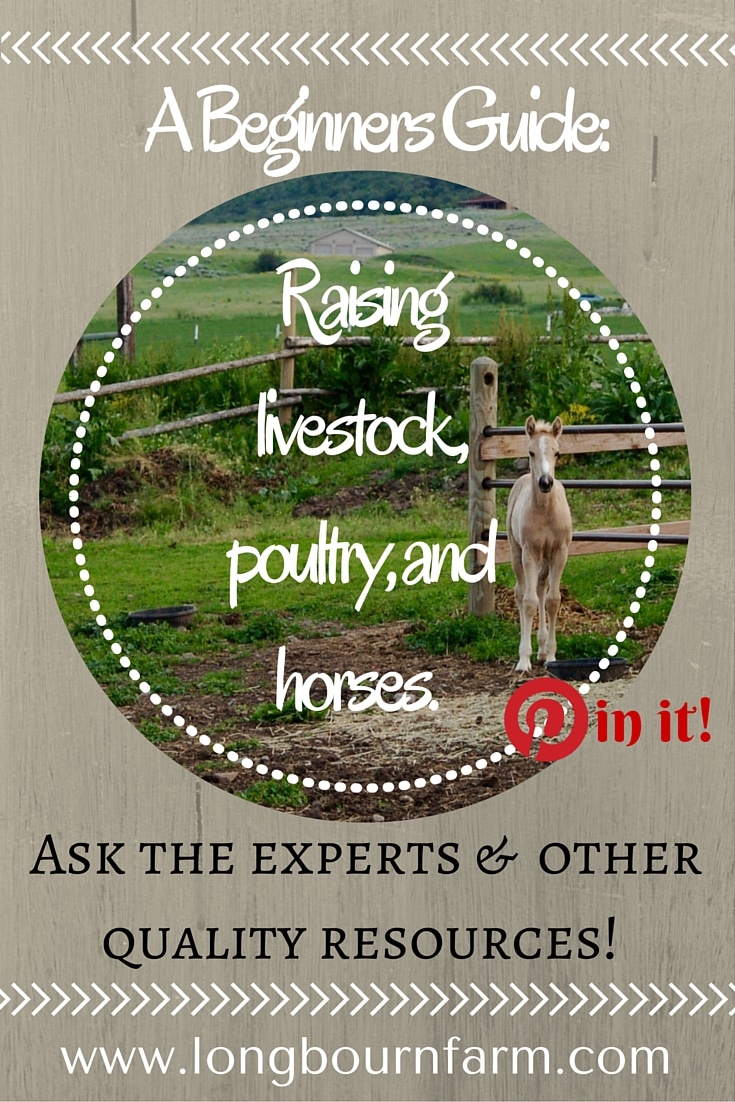
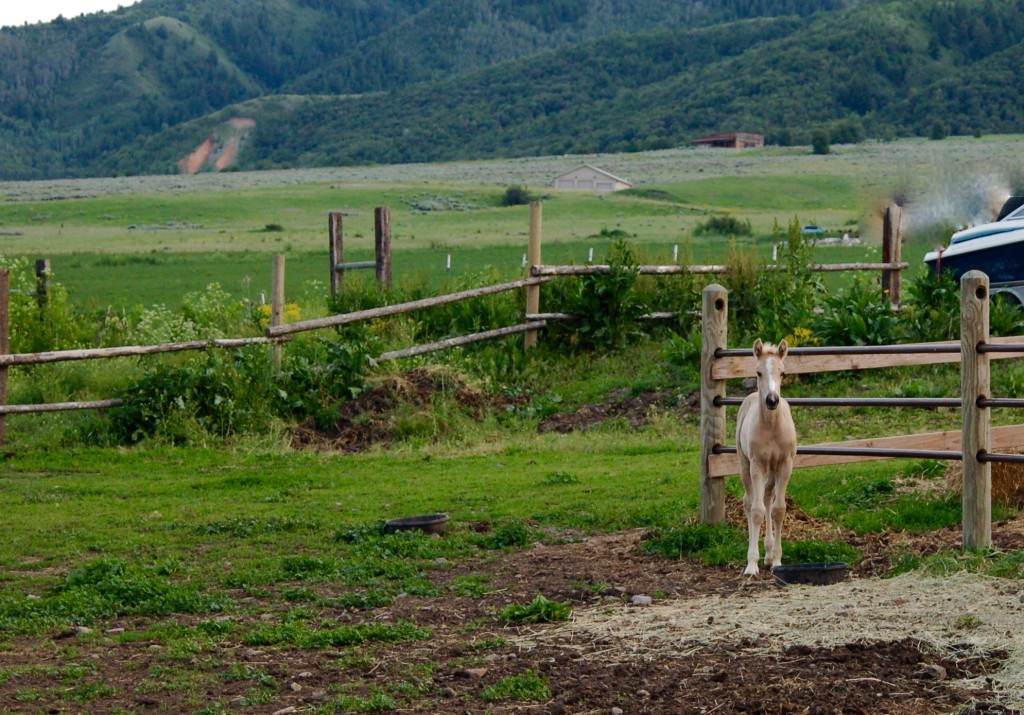
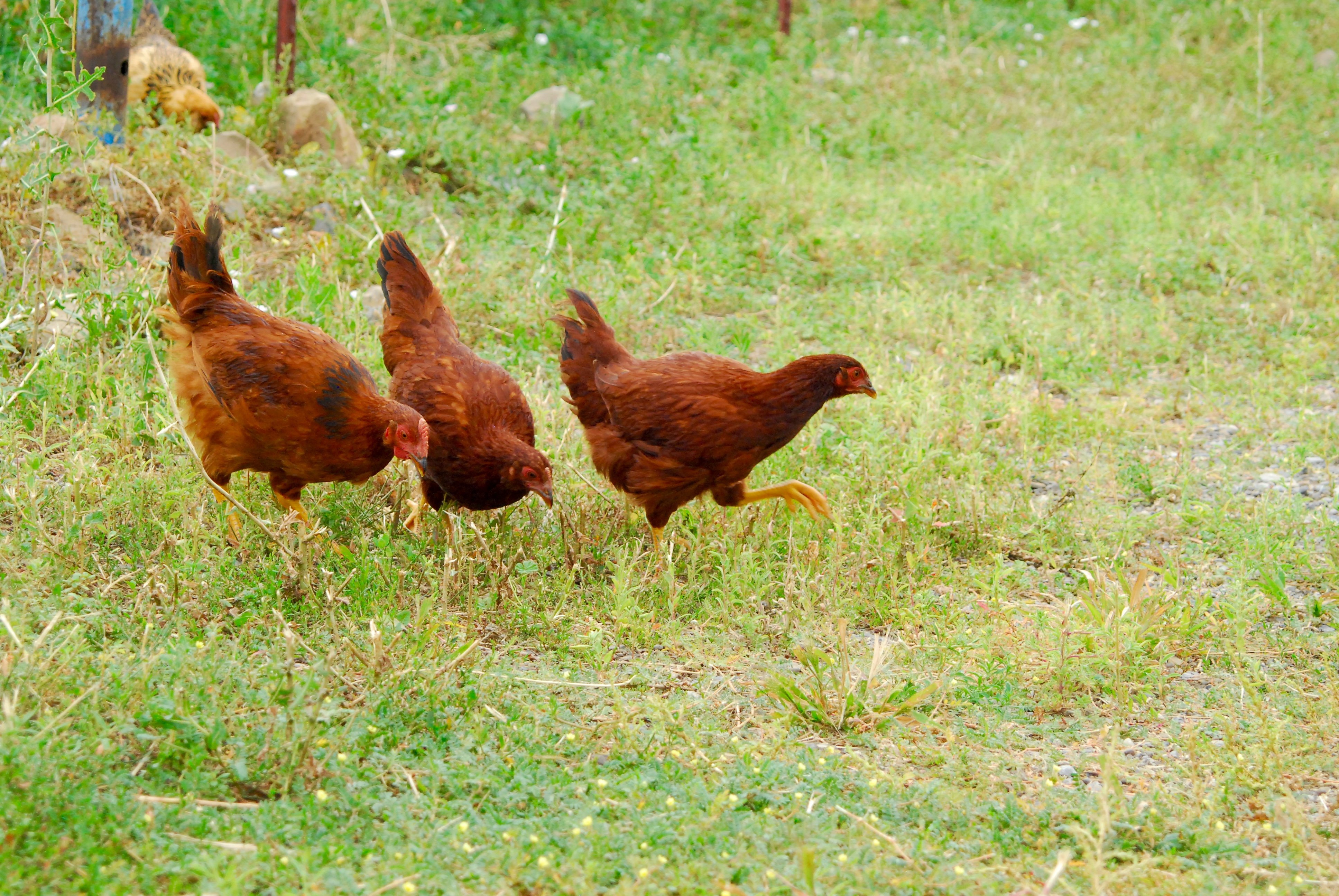
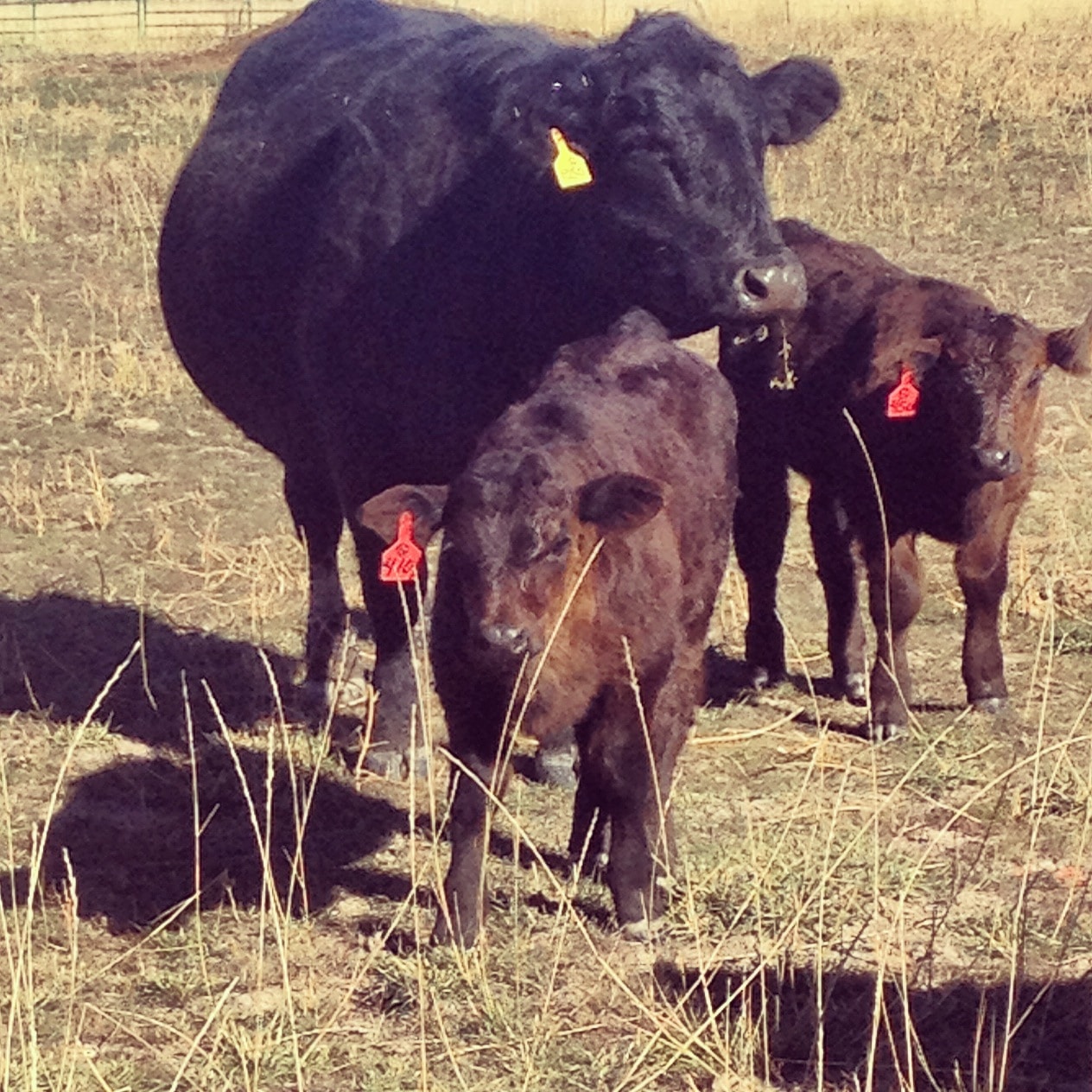
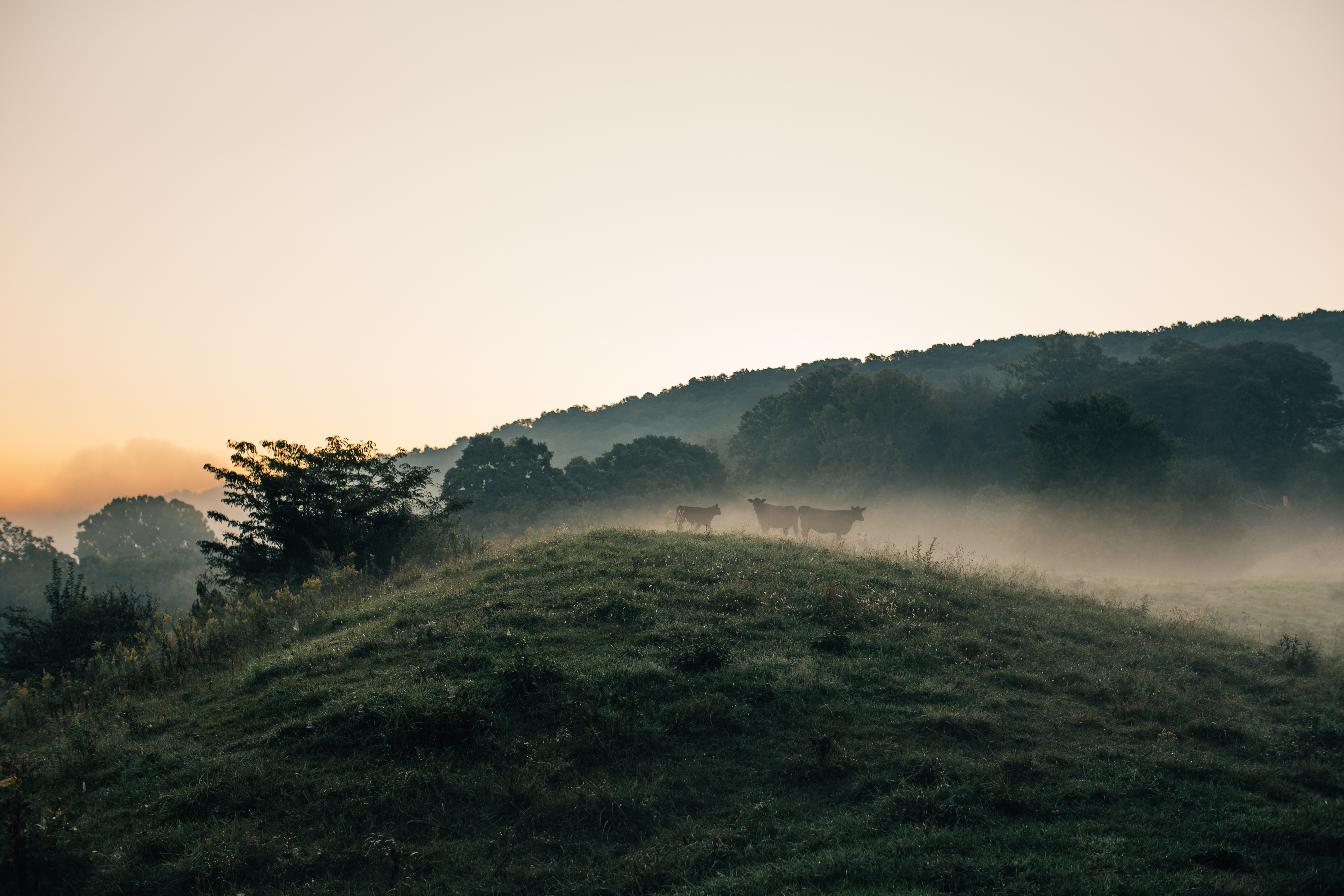
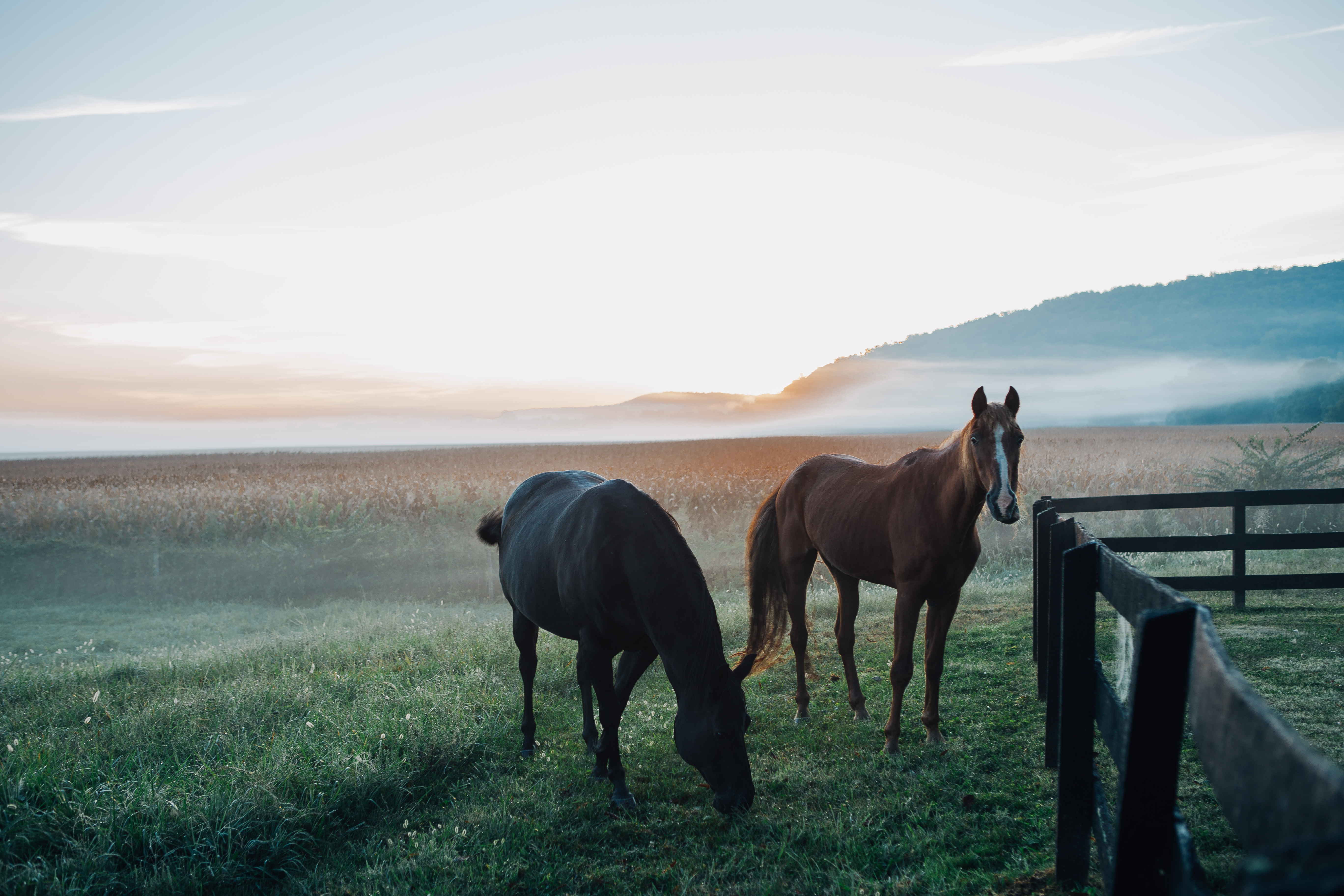
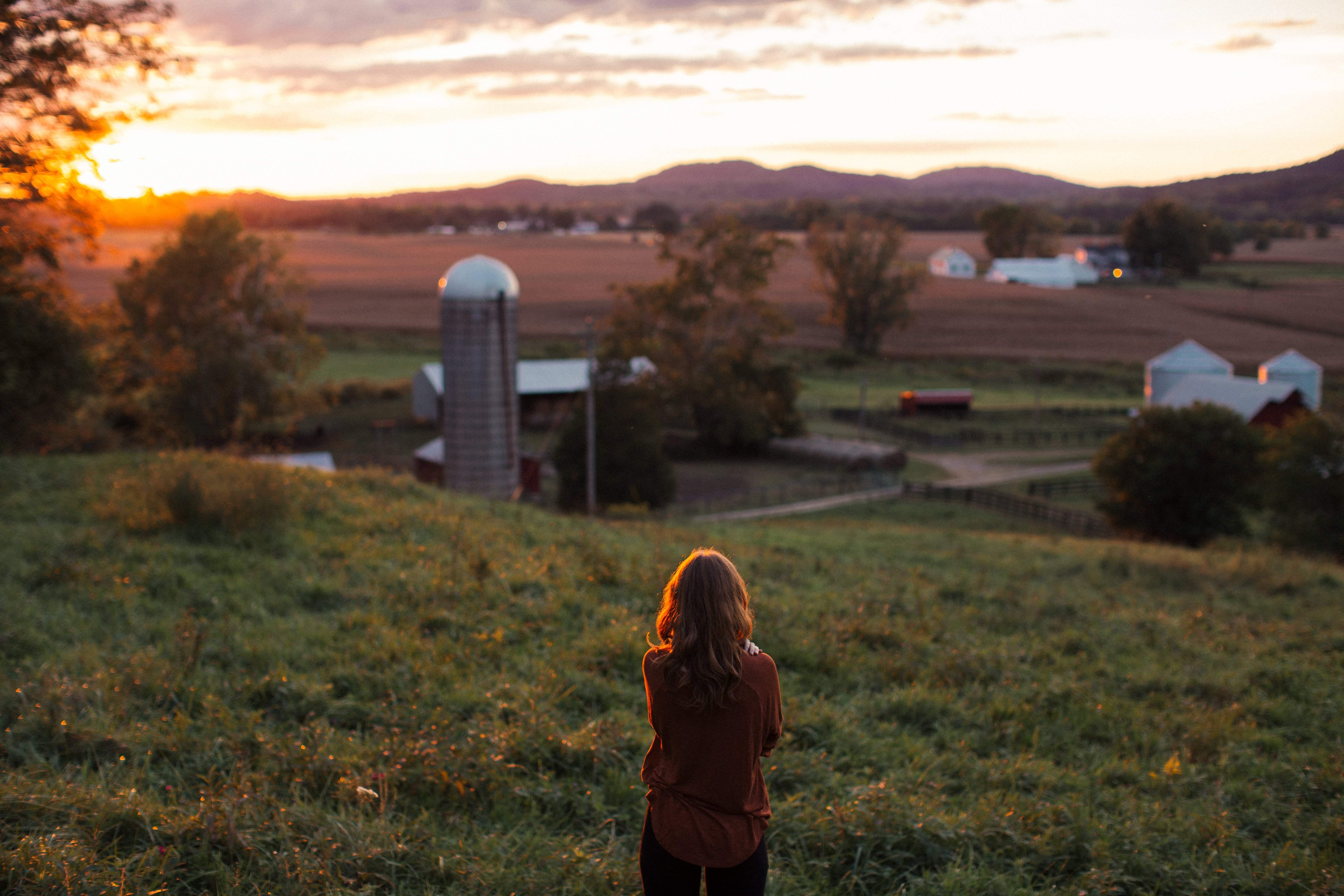


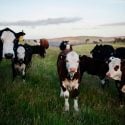


Charity Christionna Duff says
Do you know what will kill a piglet and attack a duck? The piglet had its head and feet gone. The duck was attacked in the throat. The piglet was smaller than the duck. My great Pyrenees has been sticking close to the pen.
Alli says
Hi Charity, I’m so sorry that happened!! Losing animals to predators is always sad and frustrating. It’s hard to say exactly what would have done that. My first guess would be a dog or a coyote.